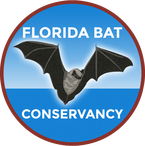Accidental Bat Species in Florida
What are accidental species? Species of bats that have been found in Florida on rare occasion, but are not permanently or seasonally living in Florida are referred to as accidental species. There are currently seven species of bats classified as accidental in Florida. In all cases only one or two specimens have ever been recorded.
Northern Accidentals: Species that have arrived in Florida from the north are referred to as northern accidentals. Three species of bats fit this category. All three are of the family of bats called the Vespertilionidae. Of these the Indiana myotis and Northern long-eared bat have not been found in Florida in over fifty years. The few specimens found in north Florida in the 1950's may have been left from an earlier population that no longer exists in Florida.
Indiana myotis (Myotis sodalis) Insectivorous
Northern long-eared myotis (Myotis septentrionalis) Insectivorous
Silver-haired bat (Lasionycteris noctivagans) Insectivorous
Southern Accidentals: Species that have arrived in Florida from the south are referred to as southern accidentals. Four species of bats fit this category. All are of the family Phyllostomidae. In each case only one or two specimens have been recorded. To date, these species have only been found in the Florida Keys and south Miami.
Buffy flower bat (Erophylla sezekorni) Frugivorous/Nectarivorous
Cuban flower bat (Phyllonycteris poeyi) Frugivorous/Nectarivorous
Jamaican fruit-eating bat (Artibeus jamaicensis) Frugivorous
Cuban fig-eating bat (Phyllops falcatus) Frugivorous
Copyright Florida Bat Conservancy 2005
Northern Accidentals: Species that have arrived in Florida from the north are referred to as northern accidentals. Three species of bats fit this category. All three are of the family of bats called the Vespertilionidae. Of these the Indiana myotis and Northern long-eared bat have not been found in Florida in over fifty years. The few specimens found in north Florida in the 1950's may have been left from an earlier population that no longer exists in Florida.
Indiana myotis (Myotis sodalis) Insectivorous
Northern long-eared myotis (Myotis septentrionalis) Insectivorous
Silver-haired bat (Lasionycteris noctivagans) Insectivorous
Southern Accidentals: Species that have arrived in Florida from the south are referred to as southern accidentals. Four species of bats fit this category. All are of the family Phyllostomidae. In each case only one or two specimens have been recorded. To date, these species have only been found in the Florida Keys and south Miami.
Buffy flower bat (Erophylla sezekorni) Frugivorous/Nectarivorous
Cuban flower bat (Phyllonycteris poeyi) Frugivorous/Nectarivorous
Jamaican fruit-eating bat (Artibeus jamaicensis) Frugivorous
Cuban fig-eating bat (Phyllops falcatus) Frugivorous
Copyright Florida Bat Conservancy 2005
© Copyright 2020 Florida Bat Conservancy

